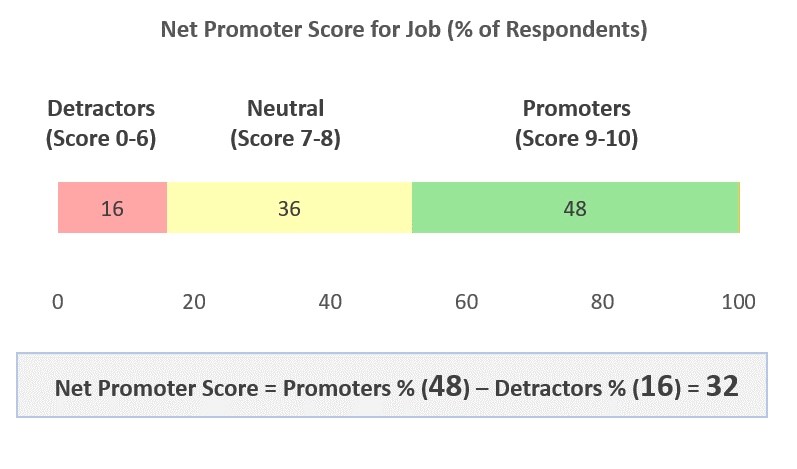What U.S. Company Leaders Really Think
Avenue Group Business Leader Research Series
We are excited to share the first article in a series devoted to findings from the inaugural Avenue Group Business Leader Survey.
Introducing our Inaugural Avenue Group Business Research Study
We conducted an in-depth, quantitative online survey of over 500 U.S. business leaders, in which we explored perspectives on a wide range of topics. The survey respondents lead companies that have over 250 thousand dollars in annual sales, with 65 percent presiding over companies with over one million dollars in yearly revenues.
Gauging job satisfaction is an important part of our research. We asked the business leaders, all of whom have CEO, founder, or business owner as their title, a litany of questions aimed at getting an understanding of how satisfied they are with their roles.
Using the Net Promoter Score Approach
We used Net Promoter Score (NPS) as the primary metric to measure satisfaction levels. NPS was developed by management consulting firm Bain & Company 15 years ago to serve as a quantitative standard for gauging customer and client loyalty. It is used by 70 percent of Fortune 1000 companies. NPS is a helpful directional tool for identifying trends. Although the methodology has its critics, the wealth of historical benchmark data makes it a standard metric that crosses industries — and different areas of our lives.
The NPS approach asks one question, “On a scale of zero to 10, how likely are you to recommend [insert product, company, or brand]?” Those who respond with a score of zero through six are categorized as “detractors,” seven or eight are “passives” (neutral), and nine or ten are “promoters.” NPS is calculated by subtracting the percent of “detractors” from that of “promoters.” Therefore, the possible range for NPS is from -100 to 100. According to NPSBenchmarks.com, a site that aggregates verified scores, an example of an extremely high NPS company is Tesla (97). An example of a very poor NPS company is Comcast (-9).
Business Leader NPS
In recent years, NPS has been used to gauge employee satisfaction, using the same question and methodology. We asked our survey respondents, “How likely are you to recommend your job?” Nearly half of the business leaders in our sample — 48 percent — answered nine or 10, making them “promoters,” while 16 percent said zero to six and were therefore “detractors.” We subtract the detractors (16) from the promoters (48) to get an overall NPS of 32. This score indicates that, on balance, the business leaders are pretty satisfied with their jobs.

Throughout the survey, we asked a series of questions about the business leaders’ companies. The size of the company one leads appears to have an impact on one’s job NPS. Those leading companies with less than one million dollars in annual sales had an NPS of 27, while those leading companies with over ten million dollars in annual sales had an NPS of 38.

We stretched the NPS approach quite far by applying it to many areas of the leaders’ lives to see where their job fits in. Respondents scored their spouses / partners, employees, and children the highest — all with NPS over 40. Management team came in lower at 35, but still higher than the job score. Investors were the lowest rated group of people (25), although they did manage to outperform smartphones (24).

We will continue to share the findings from our survey over the coming weeks. We have a wealth of data on business leaders’ productivity habits, trusted sources, preferred methods of education, and perceived strengths and weaknesses.
2018 Avenue Group Business Leader Survey Methodology:
Avenue Group conducted an in-depth, quantitative online survey of 513 U.S. business leaders. Respondents hold the title of CEO, Founder, or Business Owner and lead companies with greater than $250K in annual sales. The sample is comprised of leaders with company sales as follows: $250-500K (9%), $500K-$1MM (26%), $1-5MM (26%), $5-10MM (18%), >10MM (21%). Industry breakdown is as follows: professional services (22%), technology & telecommunications (15%), financial services (11%), consumer & retail (10%), health care & pharmaceuticals (7%), industrials (5%), public sector (4%), media & entertainment (4%), energy (4%), oil & gas (3%), social sector (1%), other (13%). Geographical distribution is as follows: Southeast (30%), Northeast (28%), West (22%), Midwest (20%).
This article was written by Avenue Group Founder Jeremy Greenberg






Leave a Comment